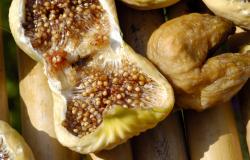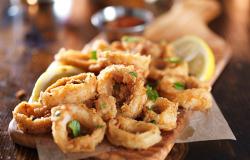Vitello Tonnato (Veal With a Tuna Sauce)

Antipasti or appetisers are assaggini or 'little tasters' of more abundant things to come during a four course meal. Piedmont, my adopted region is renowned for its variety of these dishes. Here they can be raw or cooked, hot or cold, and can be meat, fish, egg, vegetable or cheese-based. It’s not uncommon for home cooks and restaurants here to serve several come mealtime. Most locals here know however they're best off to show restraint at the beginning of a meal and not overindulge before their starters, mains and desserts arrive. Personally though, I find this very difficult, especially when a quality vitello tonnato is served to commence the feasting.
The umaminess of its distinct meat-fish combination renders vitello tonnato, meaning 'tunnied veal', something well out of the ordinary. Essentially, you boil a boneless cut of veal and leave it in your refrigerator overnight. The next day, you slice it as finely as possible, arrange the slices on a platter and lather a tuna, hard-boiled egg yolk, anchovy and caper-based sauce on top. Add a few caper berries for garnish and voilà,you have possibly the most elegant Piedmontese antipasto to start a summer feast.
The process for making this dish may appear a bit long. Rest assured though, it's quite simple to make. Over the years, I've also picked up some tips from locals in the know for getting the best possible results. Don't be tempted to boil the meat for any longer than the indicated 35 minutes, first of all. As Paolo, my butcher argues, the meat will continue to cook from the residual heat of remaining in the broth-filled pot. Also, if a customer brings him an overcooked cut ofrotonda(that's the torineseterm for the equivalent Australian/British silverside or American round steak), he says he finds it very difficult to slice the meat with his affettatrice to the immaculate, prosciutto crudo-like thinness that diners increasingly expect when served this dish.
Secondly - and this advice comes from my cooking school teacher - forget about replacing the hard-boiled eggs yolks with mayonnaise, which is becoming a more and more common practice in Piedmont. Why? The mayonnaise will be weighed down by all the other ingredients, resulting in a less than appetising-looking runny mess. For a perfectly emulsified result, simply add some extra virgin olive oil in a slow, steady stream as you pulse the minced tuna, anchovies, hard-boiled egg yolks and capers in your food processor.
A couple more notes, this time regarding capers and anchovies. In Italy, salt-preserved anchovies and capers are easily available. They are generally the preferred choice too when making this and many other dishes which include these ingredients. Salt, after all, is not only one of the world's oldest preservatives but also one of the most effective agents for bringing out the flavour of foods. Elsewhere though, you're more likely to find vinegar-preserved capers and oil-packed anchovies. If so, be sure to drain these thoroughly of their respective preserving liquids as their quality is not often up to scratch. Simply place them on a plate lined with absorbent paper towels to do so. To remove excess salt, soak the anchovies and anchovies and capers in cold water for 10 minutes and rinse them afterwards.
Finally, even though vitello tonnato is generally considered an antipasto here in Piedmont, do feel free to serve it as a summery one-dish meal or main course. At this very hot and humid time of year, I often enjoy making a meal out of platter of this dish, accompanied by a green salad, for my family and I of three. The four course meal scenario I described above is nearly always reserved for feast days and special occasions in the region. Basically, don't feel the need to go all out on a weeknight!
Ingredients (serves 6 as an antipasto or 4 as a main course)
Bring a large stockpot of water to boil with three tablespoons of salt. Add a sprig of rosemary, a carrot, an onion, a celery stick, salt, juniper berries and the boneless cut if veal. Cover and leave to cook on low-medium heat for no more than 35 minutes. Turn off heat and leave meat to cool completely in its broth. Once at room temperature, place stockpot in refrigerator and leave overnight.
The next day, prepare the salsa tonnata or tuna sauce. If using two whole, salt-preserved anchovies, soak in cold water for 10 minutes. Remove, rinse of excess salt and drain on a plate lined with paper towels. Starting from the tail, split the anchovy into two and remove its spine. You now have 4 fillets. Mince and add to the bowl of your food processor. Drain tuna and capers of preserving oils, brines or vinegars. If using salt-preserved capers, rinse thoroughly of any visible salt granules. Break up the tuna chunks into small pieces and add to the bowl of your food processor. Mince the capers and hardboiled egg yolks and add to your food processor. Pulse until the all the ingredients are finely minced. Add a spoonful of vinegar (or lemon juice) and pulse again. Turn the food processor on again and add the extra virgin olive oil in a slow, steady stream (allow yourself at least three to five minutes to do this for best results) so the sauce emulsifies. Taste for salt (you probably won't need much, especially if using salt-preserved anchovies and capers) and pepper and season accordingly.
Remove meat from its broth and cut into very fine slices (alternately, take your veal to a friendly butcher who will slice it for you!). Arrange on large serving platter. Spoon the sauce on top of the meat, leaving the edges of the slices visible. Garnish with drained caper berries. Buon appetito!






